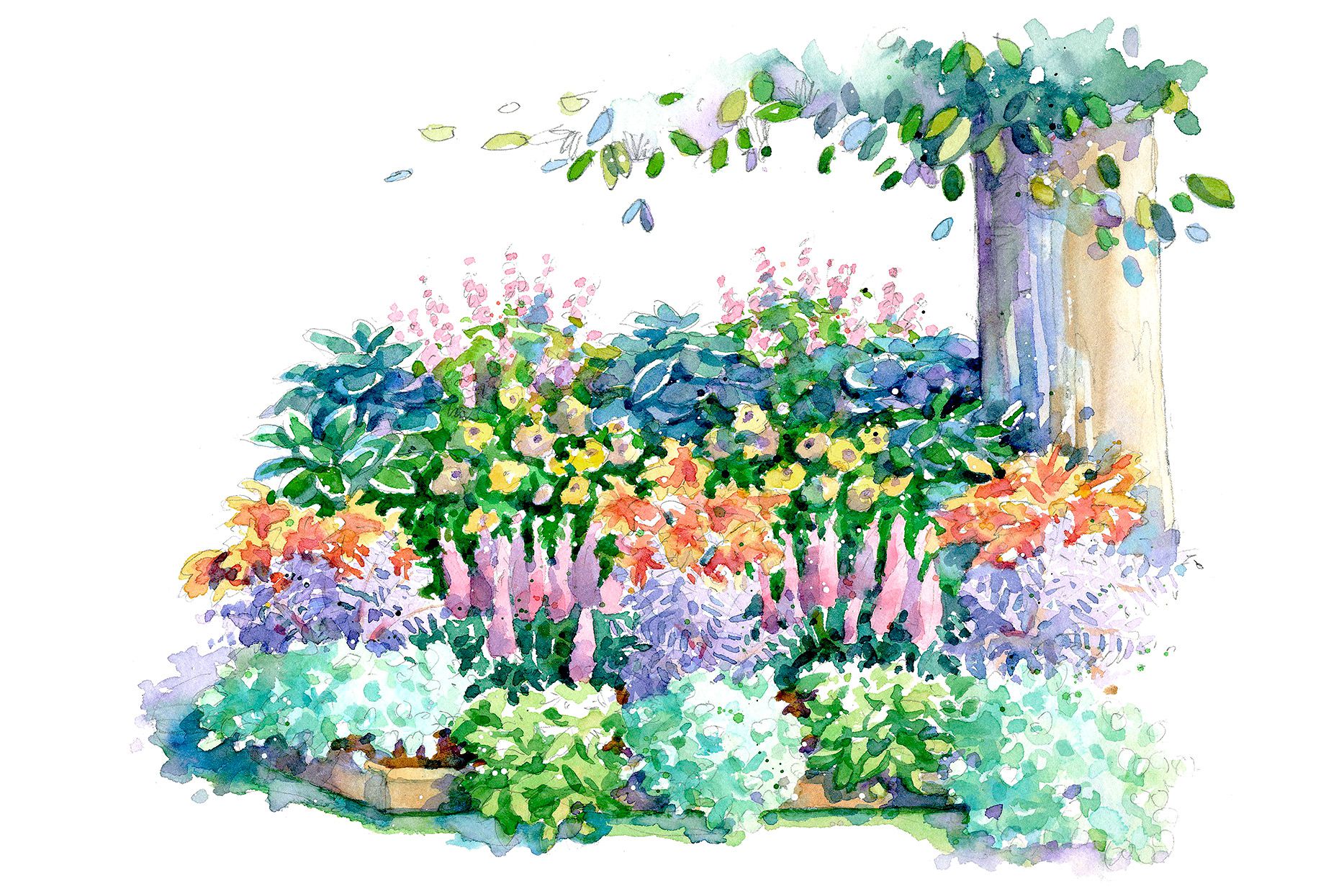Gardening in shady areas comes with unique challenges, but this no-fuss shade garden plan offers an easy solution. Featuring hardy, unfussy plants that thrive in low light, it transforms dark, bare spots into a lush oasis with minimal effort.
Overview of the No-Fuss Shade Garden Plan
This garden design from Better Homes & Gardens measures 8 feet wide by 10 feet long, making it a nice size for filling in around trees, alongside buildings, or in other shady spots.
It includes a variety of shade-loving perennials with contrasting textures, heights, and colors for visual interest. The layout clusters complementary plants together for an organic look
Nothing in this plan requires high maintenance The plants are naturally pest and disease resistant when provided with their preferred growing conditions. Simple mulching and occasional pruning or thinning keeps them looking their best
Best Plants for a No-Fuss Shade Garden
Here are some of the top plant picks used in this low-care shade garden plan:
-
Ferns – Japanese painted ferns, autumn ferns, and others thrive in shade and add feathery texture.
-
Hostas – These rugged, versatile plants suit any shady corner and come in a wide range of leaf shapes, sizes, and colors.
-
Hellebores – Early bloomers like Lenten rose provide winter and spring color and tolerate deep shade.
-
Heucheras – Coral bells and foamy bells feature evergreen foliage and airy flower spires.
-
Astilbes – Fluffy, colorful plumes rise above mounded foliage on these moisture-loving perennials.
-
Bleeding hearts – Old-fashioned favorites, these produce dangling heart-shaped blooms in spring.
-
Lilyturf – Dramatic lime-green spikes emerge from grassy lilyturf foliage in summer.
Design Tips for Creating a No-Fuss Shade Garden
Follow these tips to easily assemble your own low-maintenance shade garden:
-
Stick with shade-loving plants rated for your gardening zone to minimize fussing over plants.
-
Space plants far enough apart to allow them to fill in over time. This eliminates the need to constantly divide or prune.
-
Use mulch around plants to conserve soil moisture and keep roots cool. Replenish as needed.
-
Add leaf compost or well-aged manure at planting time to enrich soil. Avoid high-maintenance liquid feeding.
-
Group ferns, hostas, and astilbes together to mimic natural woodland settings that they thrive in.
-
Mass several plants of the same type to reduce the number of species you’re growing.
By taking advantage of these simple design and care tips, you can craft a gorgeous shade garden that practically takes care of itself.
Sample No-Fuss Shade Garden Plan
This sample plan illustrates how some of the top-recommended shade plants can be arranged for three seasons of no-fuss beauty:
-
Spring – Hellebores, bleeding hearts, and primroses display flowers while hostas, ferns, and coral bells emerge.
-
Summer – Astilbes, hostas, and lilyturf bloom as highlights while foliage fills in all around.
-
Fall – Japanese painted ferns and coral bells shine with their vibrant colors before going dormant.
The end result is a diverse tapestry of contrasting forms, colors, and textures. Yet the garden thrives with minimal time and effort required.
Putting Together Your Own No-Fuss Shade Garden
With the right plant selections, you can create a stunning shade garden that looks elegant for years with simple care. Here are some final tips for success:
-
Consult shade plant lists from reputable sources to find recommended varieties for your climate.
-
Draw out a plan on paper to visualize layout and spacing before planting.
-
Prepare soil with compost and mulch before planting to get plants off to a healthy start.
-
Select a mix of plants with multi-season appeal so something is always looking its best.
-
Stick to a palette of tried-and-true shade performers that suit your conditions and growing style.
So don’t let a lack of sunlight discourage you from gardening! Use this no-fuss approach as a guide to turn shaded areas into dazzling displays.
5 Awesome Plants for Shade! // Garden Answer
FAQ
What is the easiest plant to grow in shade?
Can you have a garden in partial shade?
How do I reduce the shade in my garden?
- A Complete Guide to Caring for Yuki Cherry Blossom Shrub - January 23, 2025
- Identifying Red Hot Poker Seeds: What to Look For When Harvesting Torch Lily Pods - January 23, 2025
- A Complete Guide to Harvesting Evening Primrose Seeds - January 23, 2025

